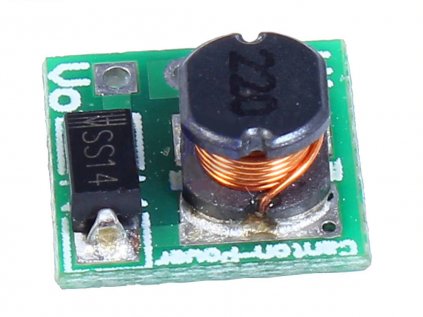Step-up converters
Step-up converters or boost converters can boost the lower DC voltage to the desired value. A step-up converter is basically a DC-DC step-up converter that converts a lower input voltage to a higher output voltage. This is useful in a number of applications. For example, if you have battery with a lower voltage and you need to power a device that requires a higher voltage.
Bestsellers
How does the step-up converter work?
How does it work? The magic lies in storing energy in the inductor and then discharging that energy at higher voltages. Something called the "duty cycle" also plays a role, which affects how much the tension increases.
Boost converter contains two circuits, one with inductor and mosfet, the other with with a capacitor and a load. A diode separates them. As soon as the mosfet turns on, the inductor charges - after it turns off the voltage from the coil goes into series with the supply current. The voltage of the second cycle will thus be much higher than the voltage of the power supply. In the second cycle, the output is energized and the capacitor is charged, which will supply the output while the inductor is charging - the time it takes to charge affects the output voltage.
As far as applications go, step-up converters are great for all sorts of things. From simple projects like LEDsthat just need a little more juiceto more complex things like solar chargers or mobile devices where you have to get the most out of small batteries.










